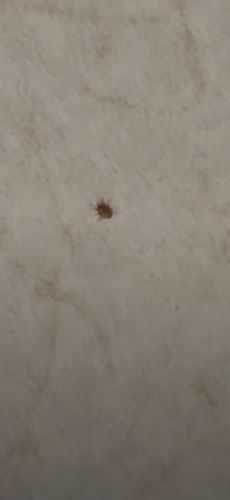Bed Bug
Scientific Name: Cimex lectularius
Order & Family: Hemiptera (Order), Cimicidae (Family)
Size: Adult bed bugs are typically 4-5 mm (0.16-0.20 inches) long, similar in size to an apple seed. Nymphs are smaller and translucent.

Natural Habitat
Bed bugs are typically found in human dwellings, preferring to hide in mattresses, box springs, bed frames, headboards, and other furniture near sleeping areas. They can also infest cracks in walls, electrical outlets, and behind wallpaper.
Diet & Feeding
Bed bugs are hematophagous, meaning they feed exclusively on the blood of warm-blooded animals, primarily humans.
Behavior Patterns
Bed bugs are primarily nocturnal, feeding on blood while their hosts sleep. They are skilled at hiding in cracks and crevices during the day, emerging only to feed. Signs of infestation include itchy bites, bloodstains on bedding, and dark fecal spots. They can be found individually but severe infestations will have many bed bugs.
Risks & Benefits
Potential risks include itchy bites leading to skin irritation, allergic reactions, and secondary skin infections from scratching. While not known to transmit diseases, their presence can cause significant psychological distress. There are no known benefits to humans or the ecosystem.
Identified on: 8/9/2025